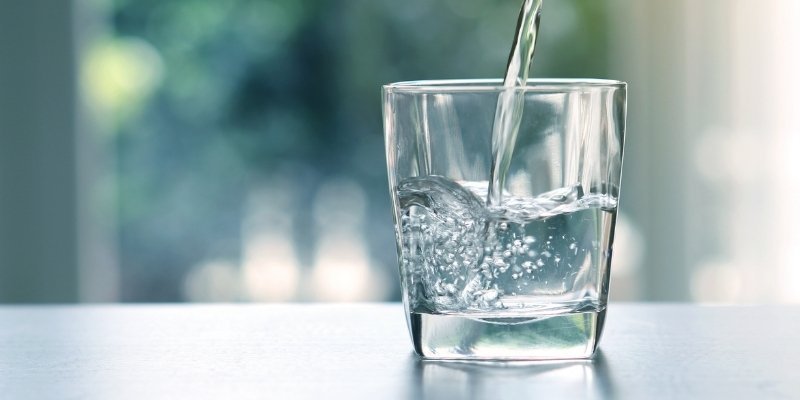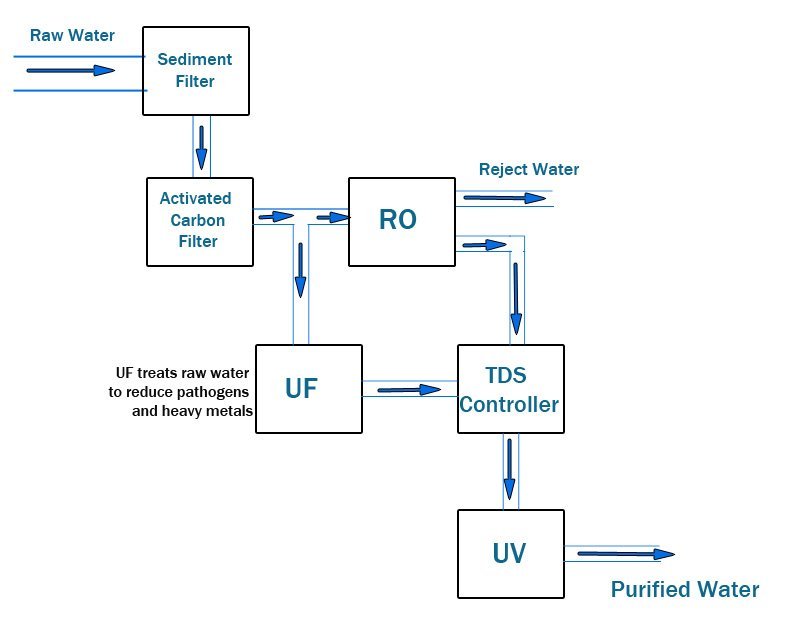With rapid urbanization and industrialization, we started seeing a drastic fall in the quality of water supply. Nowadays, most homes in cities like Bangalore, Chennai, Ahmedabad, Bhopal, Jaipur etc need an RO water purifier for cooking. And when you set out to buy an RO purifier, you are bombarded with a plethora of terms related to various water purification technologies.
Out of them, MTDS or a variation of the term is found in almost every product description. So, what does it mean? What are its implications? Let us explore in detail.
What is MTDS?
Before going into MTDS, we need to first understand what TDS is. TDS refers to Total Dissolved Solids in water. The dissolved solids are mainly calcium, magnesium, sodium, potassium, nitrates, sulphates, carbonates and bicarbonates. Some of the salts like calcium, magnesium, sodium and potassium, within their permissible levels are beneficial to our health. But others like nitrates and sulphates are not.
Passing water through an RO ( Reverse Osmosis) membrane is the only way to remove these dissolved salts from water. But drinking water should have a certain level of dissolved salts. This is where MTDS comes into play.
MTDS refers to Manual TDS controller. This helps adjust the purified water’s TDS to desired levels. As per WHO, water with too little TDS is not good for health. Long term consumption of water with TDS less than 100 may throw our body off its electrolyte balance.
That is why RO water purifiers have a Manual TDS controller to adjust the TDS level as per the consumer’s needs. Note that you will need professional help to adjust the TDS levels.
So, ask your service technician to set it as per your needs after checking the water’s palatability.
You may also like: Best Electric Kettles in India
How MTDS Works?

As mentioned, water that passes through the RO membrane is completely devoid of TDS. Such water is not suitable for human consumption. So, manufacturers have included a system whereby the raw input water, after passing through sediment and activated carbon filter gets mixed with the RO purified water so that the overall TDS level increases.
So, what MTDS necessarily does is bypass the RO membrane and increase or decrease the quantity of raw water that gets mixed with the RO water.
Role of UF in RO Water Purifiers
You might be thinking- If raw water gets mixed with the water that passes through the RO membrane, then, is the output water really pure? Well, this is where UF ( Ultra Filtration) or MF ( Micro Filtration) comes into play.
MF or UF membranes are similar to RO membranes. But, they have a larger pore size of 0.01 to 0.1 microns, while that of RO is 0.0001 microns. UF cannot remove dissolved salts. But, it is pretty effective at removing heavy metals like lead, arsenic, iron etc and also pathogens like bacteria and viruses.
So, the raw water is made to pass through the UF membrane, in addition to the sediment and activated carbon filters. This way, you can be sure that the water you get doesn’t have any pathogens or heavy metals.
Note that not all RO water purifiers have UF or MF membranes. So, when you buy an RO water purifier with TDS control system, ensure that you get one with a UF filter.

Other Names of MTDS
MTDS is the name used by Eureka Forbes for their TDS control system. Similarly, AO Smith calls it Mineralizer technology, while Kent calls it just TDS controller.
Alternative To TDS Control System

Not all brands use a TDS control system to adjust the TDS level of the water. Brands like Havells and HUL uses Mineral Cartridges instead.
In their system, water does not bypass the RO membrane. Instead, the whole input water passes through the RO membrane and later, the water passes through a mineral cartridge which infuses essential minerals like Calcium and Magnesium back to the water.
These cartridges typically contain pure magnesium granular balls, Calcite balls, Tourmaline ceramic balls etc, which restores pH, removes chlorine and infuses calcium and magnesium into the water.
Conclusion
So, if you are buying a water purifier with a TDS controller, ensure that it has a UF or MF membrane so that the water you get is absolutely pure.
If on the other hand, you are getting a water purifier with a mineral cartridge, you don’t need an MF or UF filter. Because the RO membrane with a smaller pore size would have caught everything that an MF filter can. So, paying more just for the extra filters doesn’t make much sense.


